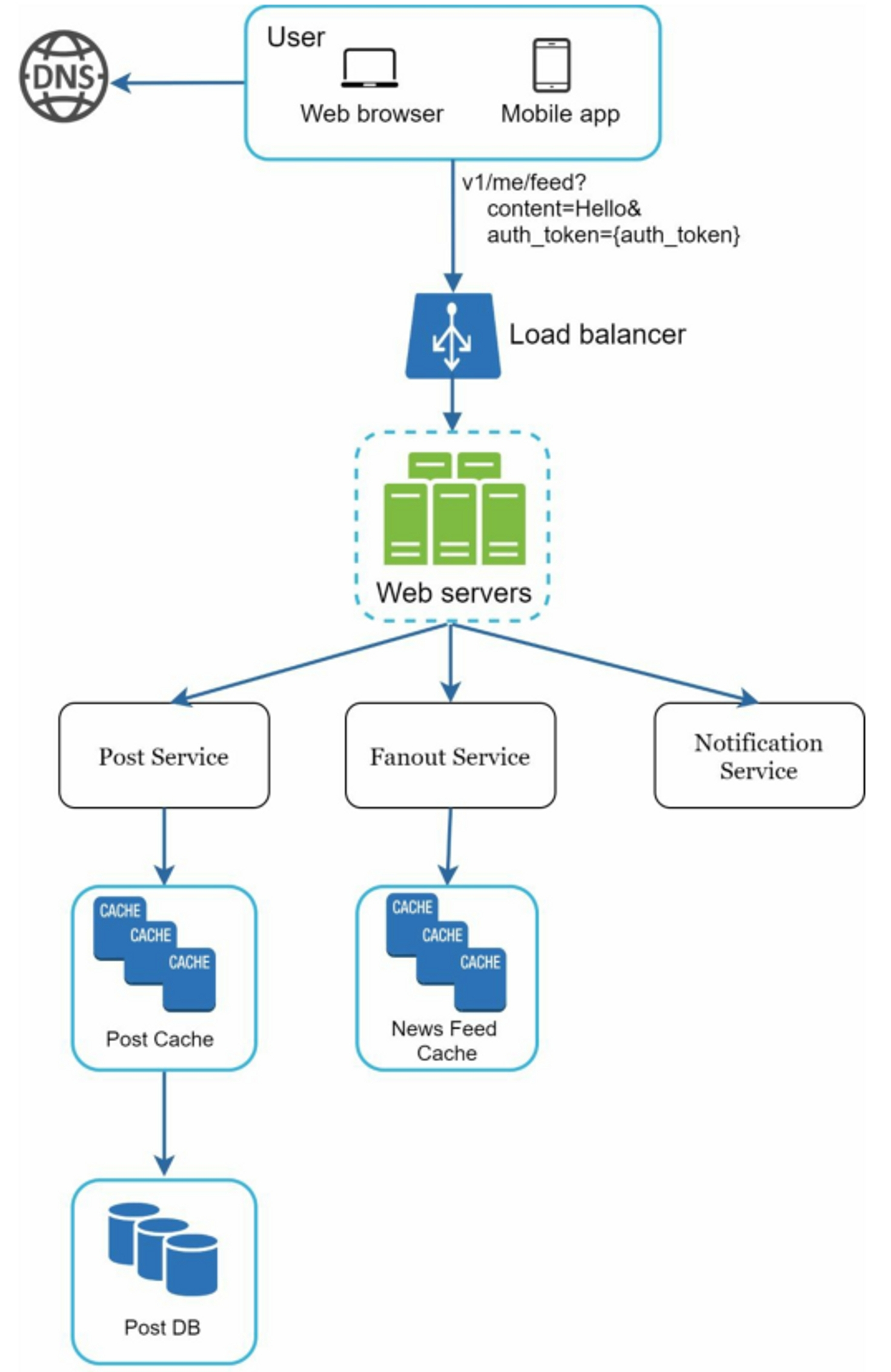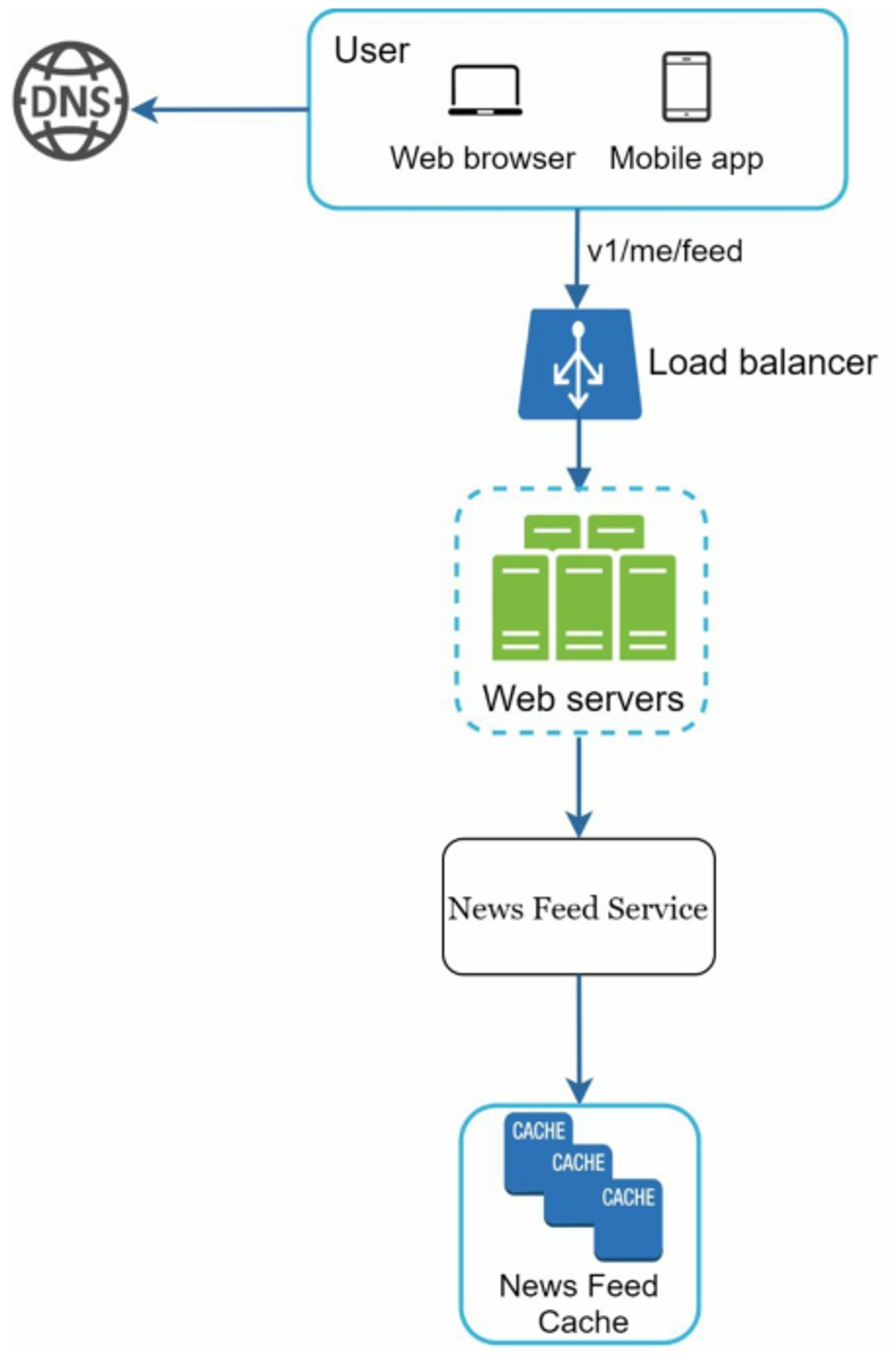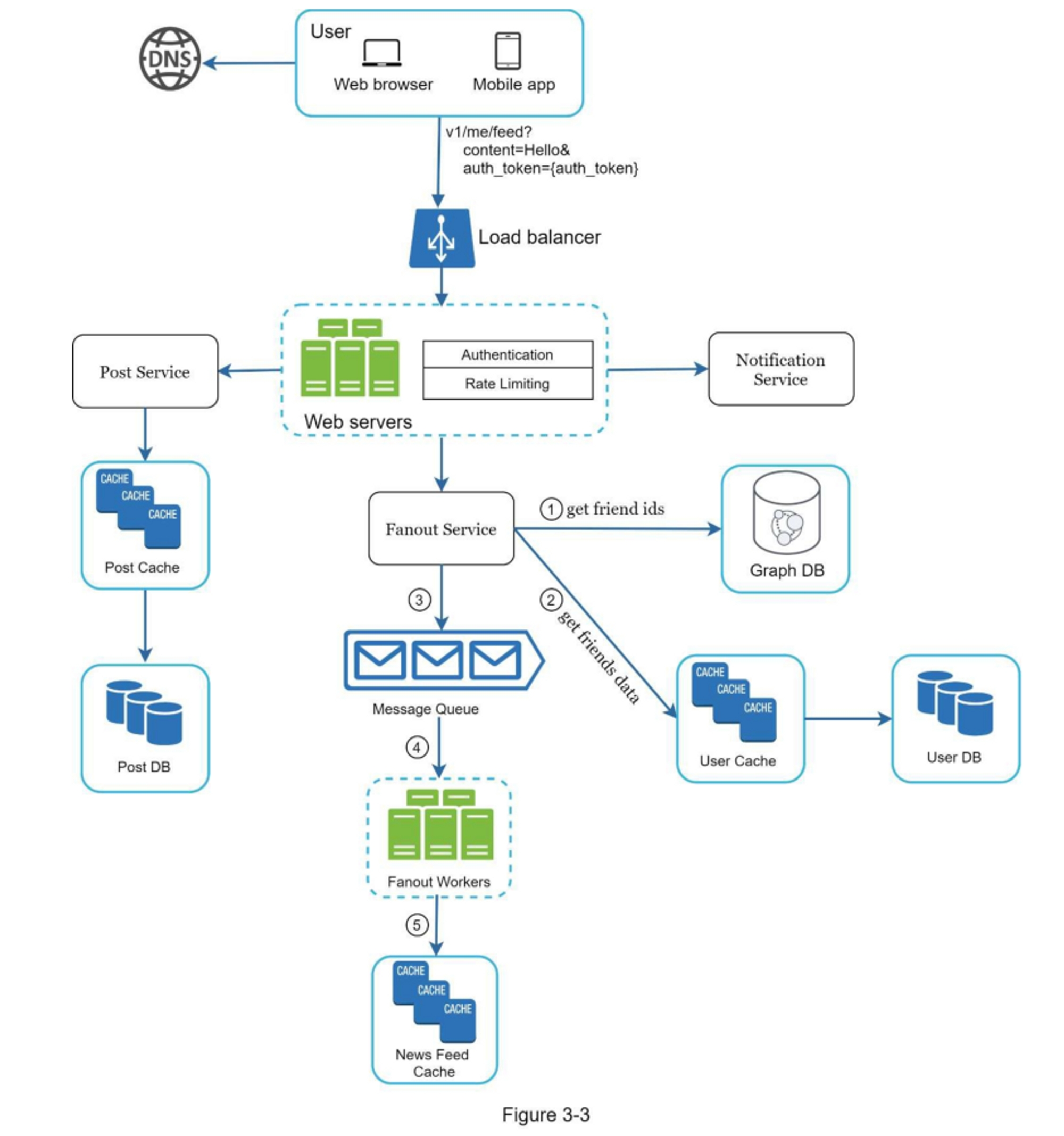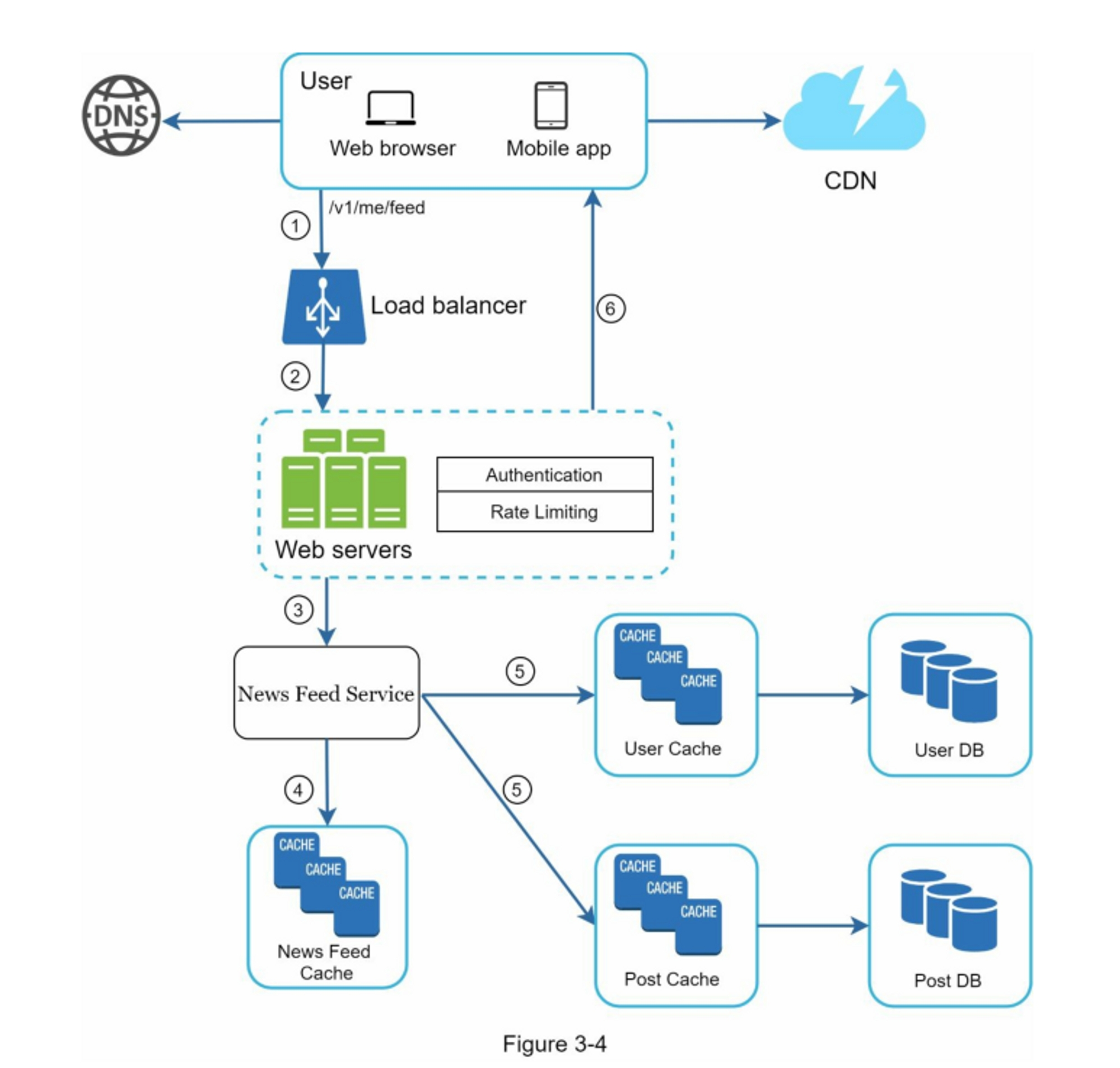System Design - Interview
1. Understand the Problem and Establish Design Scope
Ask questions to understand the exact requirements. Here is a list of questions to help you get started:
- What specific features are we going to build?
- How many users does the product have?
- How fast does the company anticipate to scale up? What are the anticipated scales in 3 months, 6 months, and a year?
- What is the company's technology stack? What existing services you might leverage to simplify the design?
1.1 Example: Design a News Feed System
Questions:
- Is this a mobile app? Or a web app? Or both?: Both
- What are the most important features for the product?: make a post and see friends' news feed
- Is the news feed sorted in reverse chronological order or a particular order?: feed is sorted by reverse chronological order.
- How many friends can a user have?: 5000
- What is the traffic volume?: 10 million daily active users (DAU)
- Can feed contain images, videos, or just text?: yes, including both images and videos.
2. Propose high-level design and get buy-in
develop a high-level design and reach an agreement with the interviewer on the design.
- Come up with an initial blueprint for the design
- Draw box diagrams with key components on the whiteboard or paper
- Do back-of-the-envelope calculations to evaluate if your blueprint fits the scale constraints.
For Example: The news feed system is divided into two flows: feed publishing and news feed building.
- Feed publishing: when a user publishes a post, corresponding data is written into cache/database, and the post will be populated into friends' news feed.

- Newsfeed building: the news feed is built by aggregating friends' posts in a reverse chronological order

3. Design deep dive
you and your interviewer should have already achieved the following objectives:
- Agreed on the overall goals and feature scope
- Sketched out a high-level blueprint for the overall design
- Obtained feedback from your interviewer on the high-level design
- Had some initial ideas about areas to focus on in deep dive based on her feedback
Example: investigate two of the most important use cases:
- Feed publishing

- News feed retrieval

4. Wrap Up
the interviewer might ask you a few follow-up questions or give you the freedom to discuss other additional points. Here are a few directions to follow:
- The interviewer might want you to identify the system bottlenecks and discuss potential improvements.
- It could be useful to give the interviewer a recap of your design.
- Error cases (server failure, network loss, etc.) are interesting to talk about
- Operation issues are worth mentioning. How do you monitor metrics and error logs? How to roll out the system?
- How to handle the next scale curve is also an interesting topic.
- Propose other refinements you need if you had more time.
Dos:
- Do not assume your assumption is correct. Always ask for clarification.
- Understand the requirements of the problem.
- Let the interviewer know what you are thinking. Communicate with your interview.
- Suggest multiple approaches if possible.
- Once you agree with your interviewer on the blueprint, go into details on each component. Design the most critical components first.
- Never give up.
Don'ts:
- Don't be unprepared for typical interview questions
- Don't jump into a solution without clarifying the requirements and assumptions
- Don't go into too much detail on a single component in the beginning
- If you get stuck, don't hesitate to ask for hints
- Again, communicate. Don't think in silence
- You are not done until your interviewer says you are done. Ask for feedback early and often.